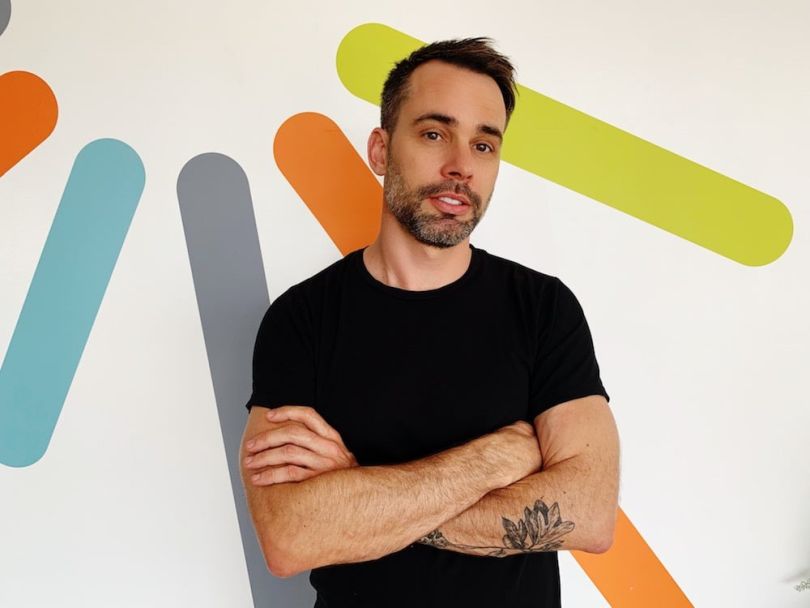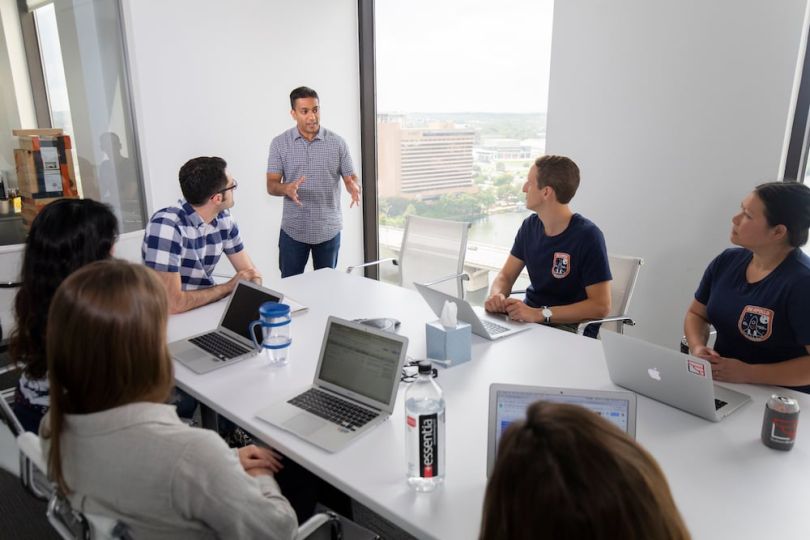Whether they’re drawing from experiences at previous ventures, diving deep into the data, working on small batches or adopting new technologies, tech leaders are tasked with a singular responsibility: ensure their teams are successful. Here’s how five leaders from a few of Austin’s fastest-growing tech companies stay at the top of their industries.

A tech makeover is underway at ActiveProspect, led by CTO Alex Wolfe. Wolfe walked us through how the team is revamping its front-end stack and highlighted a few additional technologies they are adopting along the way.
Our UI team is busy modernizing our front-end tech stack.”
How do you stay ahead of the curve? What new technologies are you excited about or eyeing for future projects?
Some of the new technologies we’re most excited about at ActiveProspect are Elixir, CockroachDB and Riak. Our high-throughput data ingestion service, written in Elixir, frequently completes requests in under a single millisecond.
CockroachDB is an up-and-coming NewSQL database that provides ACID transactions at scale, using the Raft consensus protocol to provide consistency to keyspace partitions.
Although it’s not “new,” we’re always thrilled to be able to base products on the Riak database, an implementation of Amazon’s Dynamo paper, providing CAP tunability, CRDTs and rock solid masterless horizontal scalability.
What are the biggest tech projects your team is working on this year?
Our UI team is busy modernizing our front-end tech stack by replacing our substantial legacy AngularJS app with Vue. Instead of jolting our users between the two apps or halting all new work, we’ve created a hybrid app that allows us to transition features one at a time, delivering new features while improving old ones at the same time. Since we’re really pushing the limits of Vue, we’re able to contribute to its open-source libraries along the way.

Austin healthtech veteran Brian Gambs signed on as Bright Health’s CTO in 2018. The serial entrepreneur co-founded Wealth Habit and Patient IO, which athenahealth acquired in August 2016. Now, he oversees the engineering strategies behind Bright Health, a four-year-old insurance tech startup based out of Minneapolis — and valued at close to $1 billion following its $200 million Series C in November.
We are working to deliver an experience closer to a best-in-class consumer brand without getting in the way of the doctor-patient relationship.”
How do you stay ahead of the curve? What new technologies are you excited about or eyeing for future projects?
I’ve been fortunate to have had the opportunity to be involved in a number of entrepreneurial ventures as a founder or employee and also to participate in mergers and acquisitions at larger companies. Those experiences have shaped my perspective on the different ways one can stay “current.” Being connected to the startup ecosystem and seeing what early-stage companies are building is a fantastic way to see trends and new technologies, so I try to stay plugged into that scene. The Austin startup community is friendly and welcoming which makes this much easier.
Much of what we are working on at Bright Health is squarely in the center of current technologies — cloud native systems generally, distributed/streaming/polyglot data, modern, mobile-first front-end development with tools like React. A big theme for us is being able to focus on the work that delivers value to our members and care partners, so approaches that let us focus on that rather than infrastructure are top of mind. Think lambda/serverless and a preference for PaaS versus IaaS as examples of patterns and approaches that we like for solving certain problems.
What are the biggest tech projects your team is working on this year?
Working on the Bright Health Intelligence platform and continuing to build a set of consumer centered tools to help our members better navigate the healthcare ecosystem. The Bright Health Intelligence platform is at the center of everything we are doing. It’s a set of capabilities combining data from our and our partners’ information systems into a person-centric view, using those data points to identify opportunities for us and our care partners to help our members, and then taking action on those opportunities all in real time. So much of healthcare takes place in batch mode at the speed of a fax machine. We are working to deliver an experience closer to a best-in-class consumer brand without getting in the way of the doctor-patient relationship.

Deepak Surana, a product executive with more than 15 years of industry experience, keeps OutboundEngine at the forefront of marketing automation by researching the company’s competitors, existing users and prospects. As SVP of product, Surana spearheads the company’s next big rollout: a mobile friendly OutboundEngine app.
Our customers are small businesses and they expect product experiences similar to that of consumers.”
How do you stay ahead of the curve? What new technologies are you excited about or eyeing for future projects?
We really try to understand the industries we serve, track our competitors and generate our own user and prospect research to help inform what we work on. Our customers are small businesses and they expect product experiences similar to that of consumers: Products that are easy to use and are mobile enabled. In addition, we are excited about applying artificial intelligence to the rich data we have collected over the past five-plus years to help predict which prospects our customers need to follow up with in order to generate more business for themselves.
What are the biggest tech projects your team is working on this year?
Our number one priority is the OutboundEngine Mobile App enabled for Android and iOS to help customers follow up with their best prospects effortlessly from anywhere.
Kristi Jurecka, Blackbaud’s senior director of software engineering, is leading her team through a “digital transformation” to better support its social good clientele. Jurecka has more than 20 years of experience as a technical leader and addresses projects by breaking them into smaller batches.
We are focusing our efforts on digital transformation.”
How do you stay ahead of the curve? What new technologies are you excited about or eyeing for future projects?
We found it beneficial to focus on smaller batches, thus allowing us to experiment with newer technologies and methods and pivot swiftly as needed. It is also helpful to regularly set aside a little bit of time to review and keep in touch with industry trends.
We are exploring machine learning, observability tools and service mesh as we continue to improve customer experience and productivity.
What are the biggest tech projects your team is working on this year?
We are focusing our efforts on “digital transformation:” moving from legacy architectures and on-premise systems to microservices and the cloud. This will allow us to be more agile and better meet our customer needs.

For Sanjay Challa, Liquibase’s director of product management, the key to success is to always be learning. Challa shared who and what resources he consistently leans on to build and grow, as well as what the Liquibase team has up its sleeve this year.
My secret to staying ahead is to ask questions and stay open to answers.”
How do you stay ahead of the curve? What new technologies are you excited about or eyeing for future projects?
More than anything, it’s about remaining curious and humble. I’ve always been curious about how things work, and there are a number of publications like TechCrunch, Ars Technica and The Verge that I often read to stay up to date. But my secret to staying ahead is to ask questions and stay open to answers from colleagues in engineering, our customers and sometimes our prospects. Even for technologies or concepts that I understand well, I still ask others to share what they know and am almost always rewarded by learning something more.
The reality is that building delightful products often has less to do with ‘new technologies’ and more to do with focusing your efforts as a team on understanding your users and doubling down on your differentiation. Still, as a company in the DevOps space, there’s a lot we can do to improve CI/CD and DevOps in our own engineering process. While it’s an internal project, I’m excited about relying more on AWS and Azure clouds and on Docker to rapidly instantiate environments and accelerate our testing so we can maintain quality and release more quickly.
What are the biggest tech projects your team is working on this year?
There is no shortage of big, interesting ideas that our team is working on. Probably the most meaningful projects center around user interaction and usability. Whether it is new features that better align to the workflow and expectations of our users or reworking some of our existing capabilities so that they are more approachable, it’s really motivating and energizing to reflect how on the roadmap for this year centers around human-centered design.




